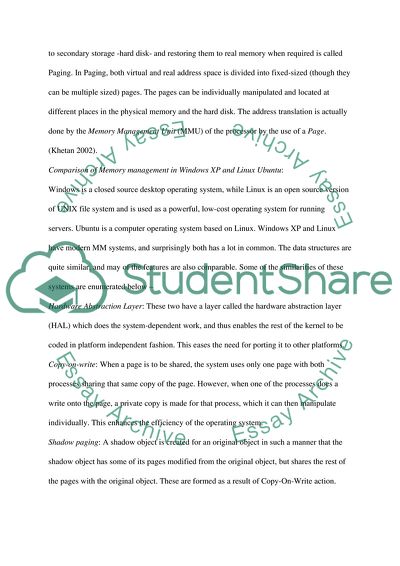Cite this document
(Windows XP Vs Linux Ubuntu Case Study Example | Topics and Well Written Essays - 2250 words, n.d.)
Windows XP Vs Linux Ubuntu Case Study Example | Topics and Well Written Essays - 2250 words. Retrieved from https://studentshare.org/design-technology/1719764-windows-xp-vs-linux-ubuntu-memory-management
Windows XP Vs Linux Ubuntu Case Study Example | Topics and Well Written Essays - 2250 words. Retrieved from https://studentshare.org/design-technology/1719764-windows-xp-vs-linux-ubuntu-memory-management
(Windows XP Vs Linux Ubuntu Case Study Example | Topics and Well Written Essays - 2250 Words)
Windows XP Vs Linux Ubuntu Case Study Example | Topics and Well Written Essays - 2250 Words. https://studentshare.org/design-technology/1719764-windows-xp-vs-linux-ubuntu-memory-management.
Windows XP Vs Linux Ubuntu Case Study Example | Topics and Well Written Essays - 2250 Words. https://studentshare.org/design-technology/1719764-windows-xp-vs-linux-ubuntu-memory-management.
“Windows XP Vs Linux Ubuntu Case Study Example | Topics and Well Written Essays - 2250 Words”. https://studentshare.org/design-technology/1719764-windows-xp-vs-linux-ubuntu-memory-management.


